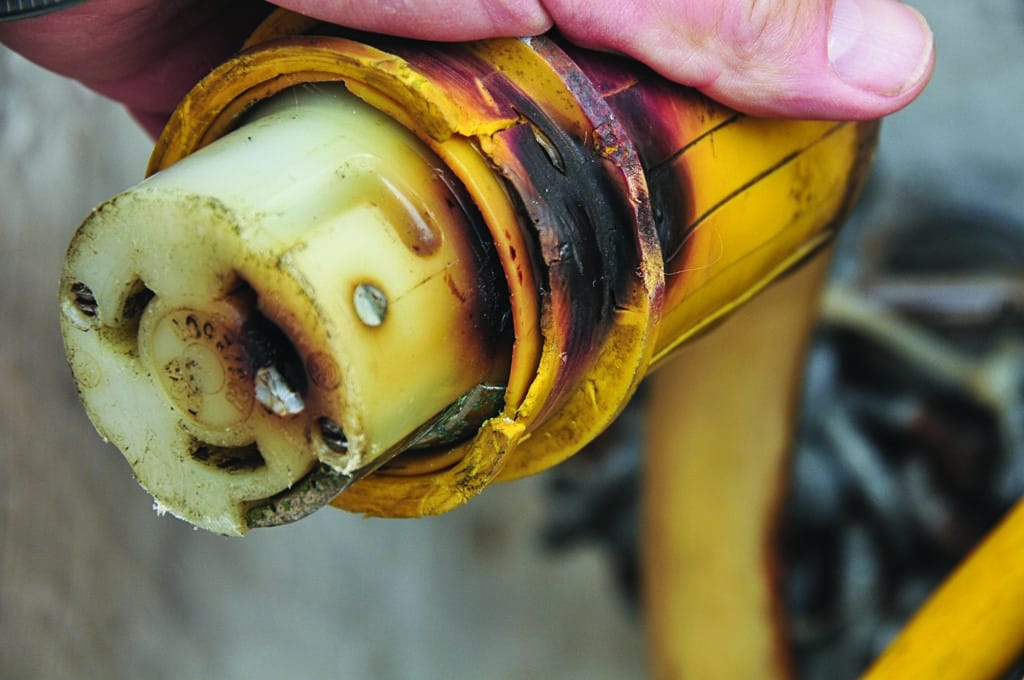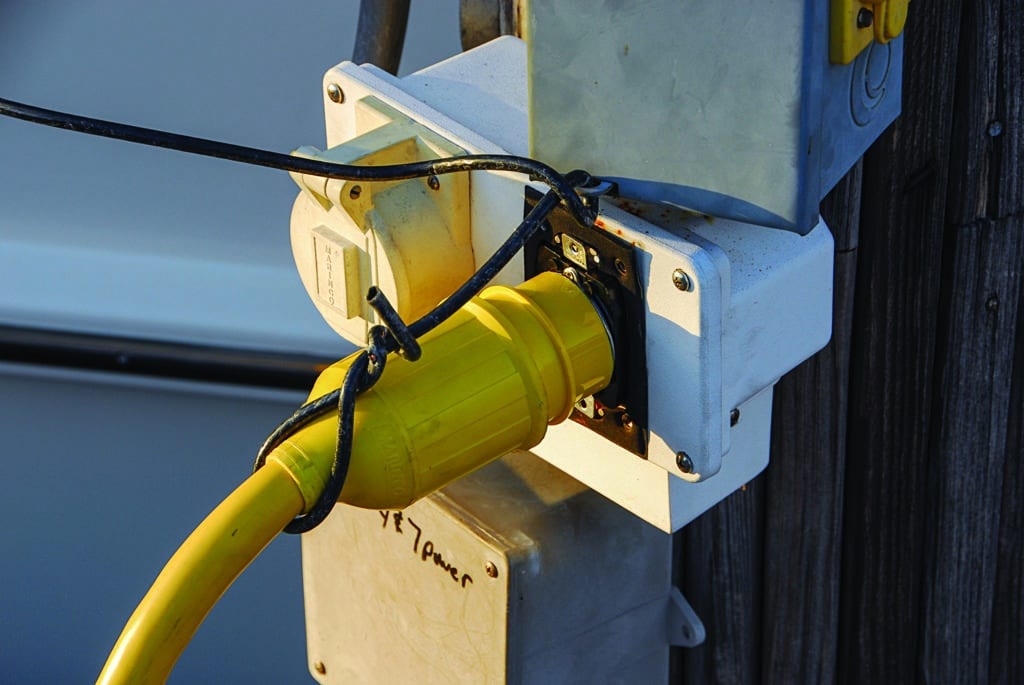
A couple of years ago I received an email from a reader, the subject line of which read, “Shouldn’t the circuit breaker have prevented this?” The attached photo showed what might be a boat owner’s (and marina operator’s) worst nightmare: the boat-side end of a seriously burned, even charred, shore-power cord. The short answer was “No, not necessarily.”
With a few exceptions, circuit breakers and fuses — referred to in the marine industry as overcurrent protection, or OCP — have but one mission: to protect wires from being overloaded. This can occur either in the event of a short circuit or if too much current is drawn. (The latter happens when someone attempts to run the water heater, hair dryer and microwave simultaneously.) Again, with rare exceptions aside, they are not designed to protect appliances or equipment; if such gear requires protection, it’s often built in.
But back to that burned shore-power connection, which falls into an entirely different category. Such failures are the number one statistical cause behind boat fires. As it turned out, that cord end had been dropped in the water, retrieved, shaken out and pressed back into service. The connections within deteriorated, and a few days later the plug was crackling and smoking like bacon on a hot griddle. The seawater dousing caused corrosion, which increased resistance, which led to heat generation — but not a short circuit or overload. Even if cord ends don’t go swimming, they can still become fire hazards simply by being inserted into a twist-lock receptacle without the added twist or engaging the locking ring. Those partially inserted plugs have been the source of many shore-power cord failures and several resulting fires.
The dockside shore-power source in this scenario, a 50-amp, 240-volt service, was capable of delivering 12,000 watts of energy, which it did, dumping much of that juice into the high-resistance connection. The average hair dryer draws 1,500 watts, so just imagine how much heat is generated by eight times that amount. High-resistance connections typically don’t cause dockside circuit breakers to trip, as the breakers don’t “know” whether the energy is going to an electric range or a smoldering connection.
Here are a few tips that will help keep your shore-power cord shipshape. Before connecting or disconnecting the shore cord, be sure to turn off the breaker at the dock pedestal. Doing so prevents arcing from occurring at the plug ends when they are connected and disconnected. Arcing creates carbon buildup, which can cause overheating. Moreover, should an end fall into the water (and you go in after it), there will be no chance of electrical shock.
If a cord end gets dunked, there are ways to deal with it that can reduce the likelihood of failure or worse. If it’s a molded and sealed plug that can’t be disassembled (these are common on original-equipment 30-amp, 120-volt cables), simply wash it off with fresh water and allow it to dry before using it again. If, on the other hand, the end is the “open” style, and can be disassembled (common on replacement cable ends), then rinsing with fresh water isn’t enough. The plug must be opened up, inspected, washed, dried and reassembled.
Finally, when plugging in at the boat end, make sure to twist the plug after inserting it in the receptacle, and use the locking ring. If the ring’s missing, get a replacement without delay. Avoid placing more load on the plug than necessary, and secure the cable to the boat if need be.
At the shoreside end of the cord, secure it to the dock to prevent strain from being imparted directly to the plug and pedestal. Again, remember to make the twist when plugging in.

Steve D’Antonio offers services for boat owners and buyers through Steve D’Antonio Marine Consulting (stevedmarineconsulting.com).








